Placing Different Types of Futures Orders
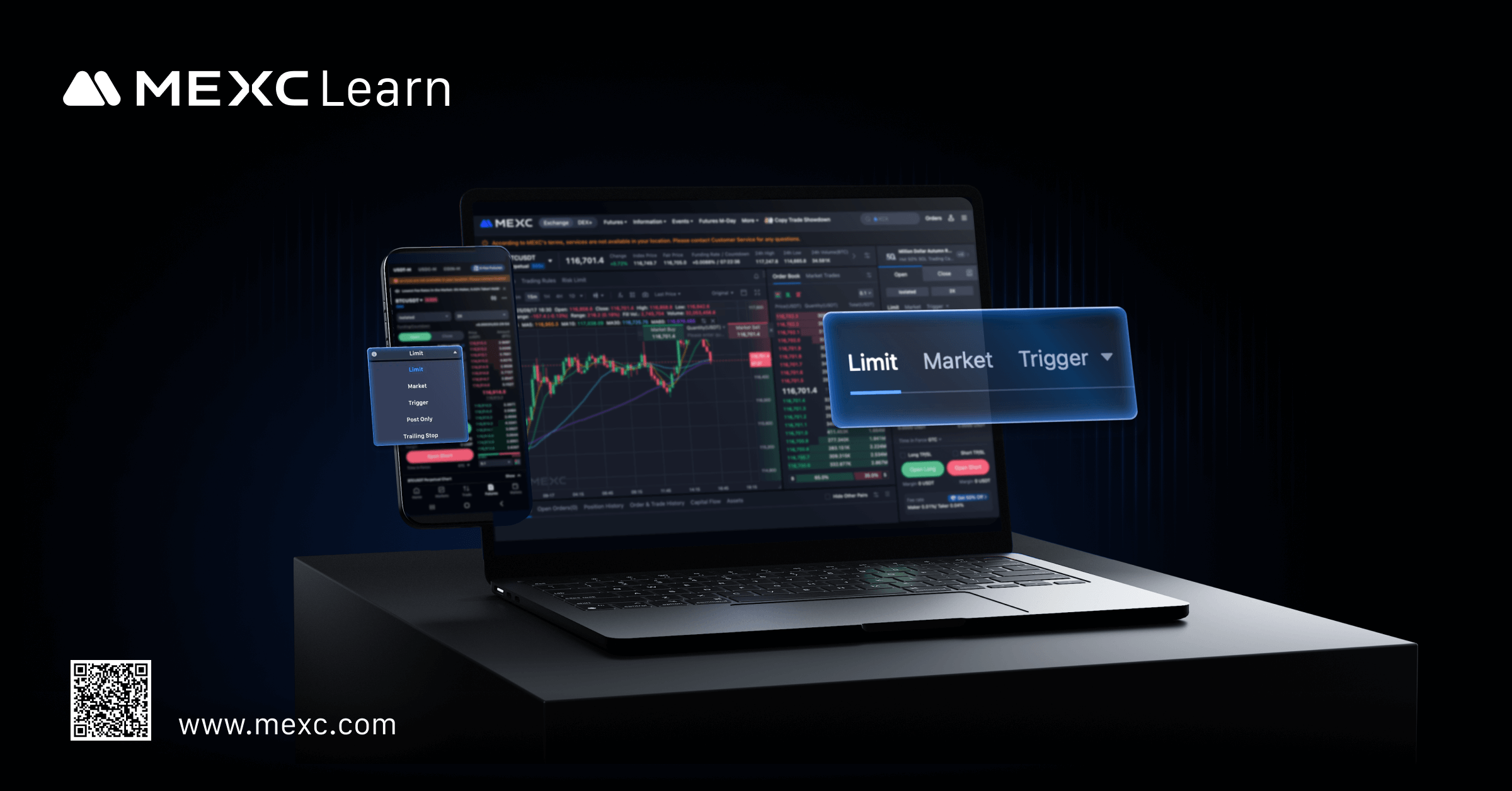
1. Limit Order
1.1 Definition
1.2 Advantages and Disadvantages
- No Slippage: Your execution price will never be worse than the limit you set, helping you control entry costs with precision.
- Maker Role: If your order does not immediately match with existing ones but stays in the order book, you often benefit from lower maker fees.
- Execution is not guaranteed, as it depends on market conditions.
- Orders may remain pending for some time before being filled.
1.3 Use Cases
1.4 Time-in-Force Options
- GTC (Good Till Canceled): The order remains active until it is either fully executed or manually canceled.
- IOC (Immediate or Cancel): The order will attempt to execute immediately. Any portion that cannot be filled at the specified price will be canceled.
- FOK (Fill or Kill): The order must be filled in full immediately at the specified price. If not, it will be canceled entirely.
1.5 How to Place a Limit Order
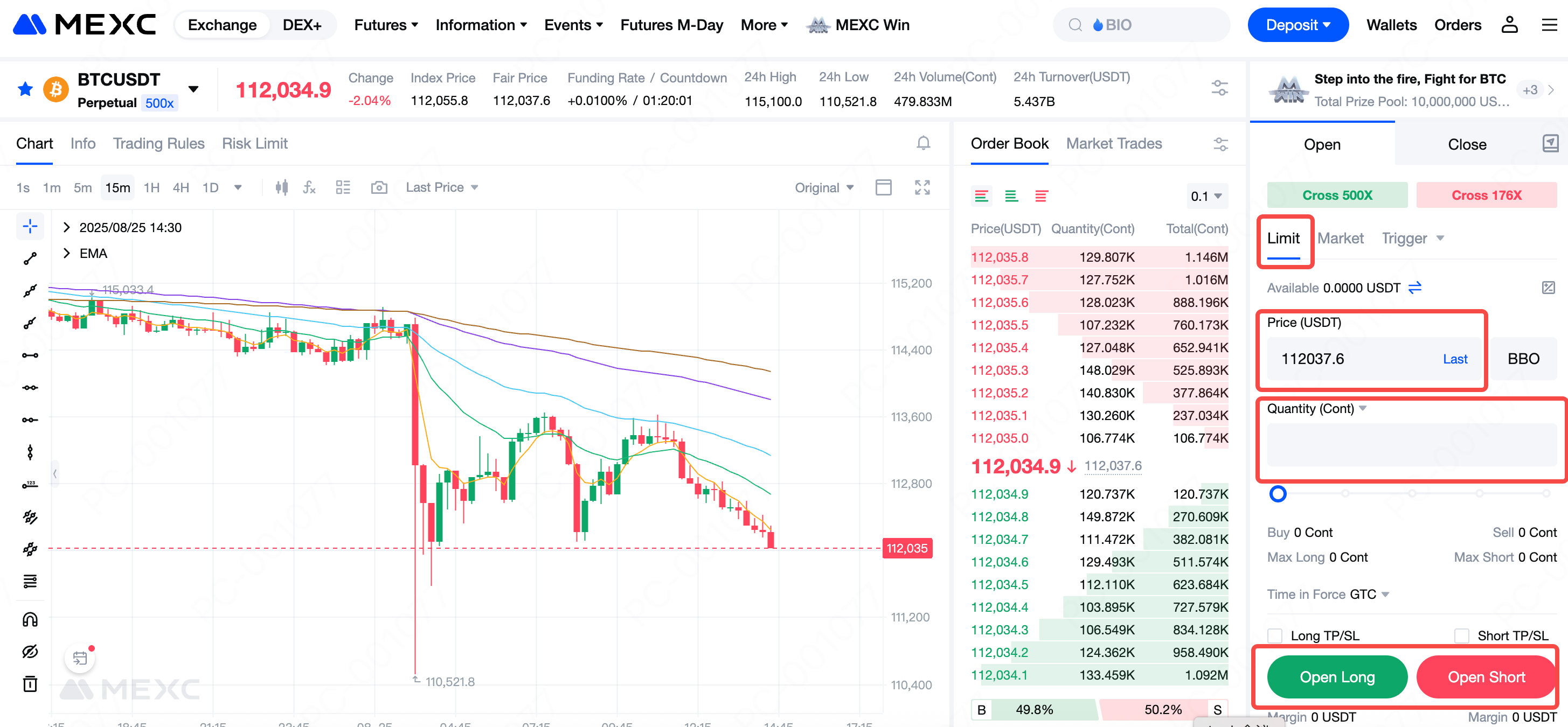
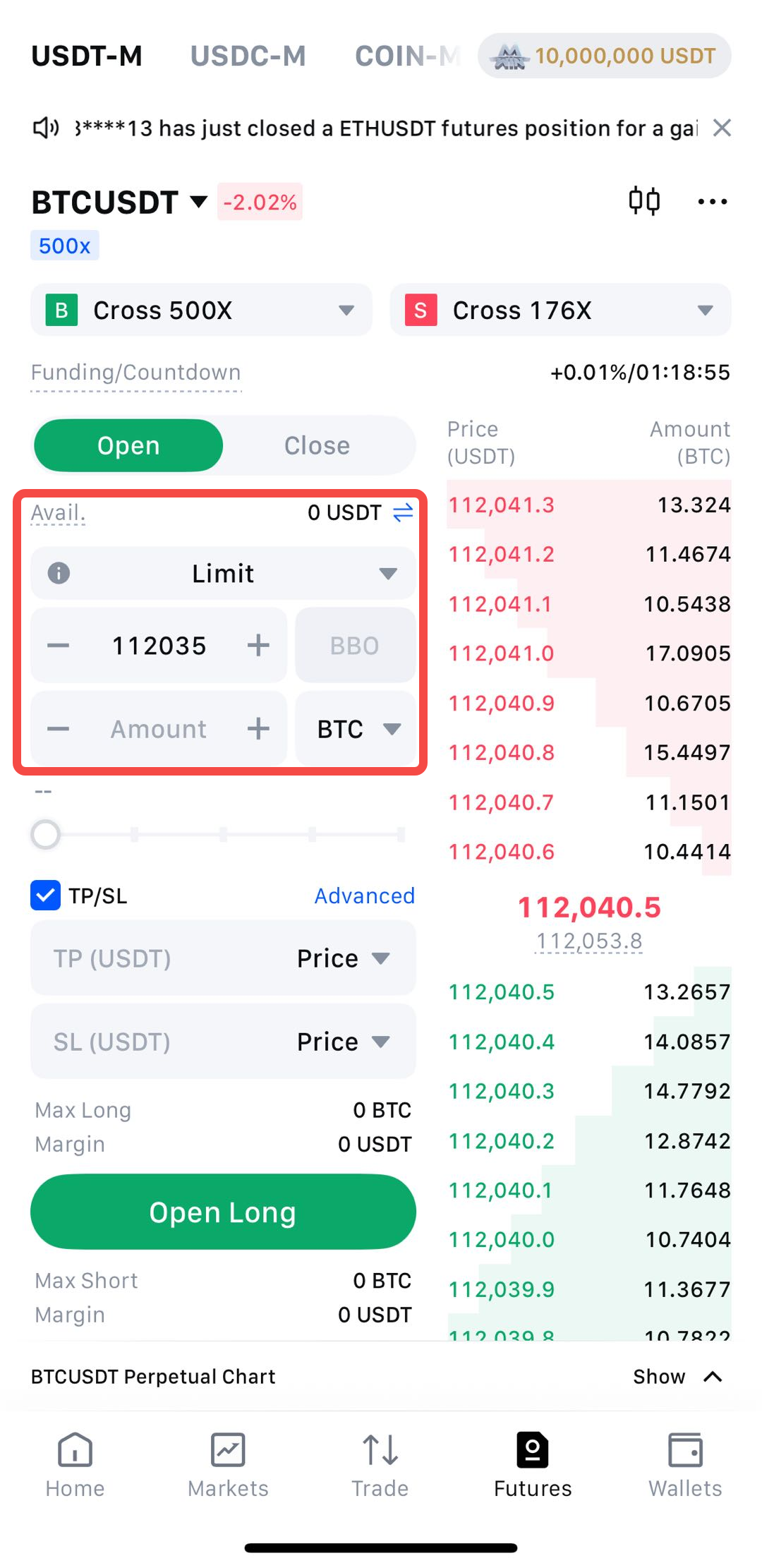
2. Market Order
2.1 Definition
2.2 Advantages and Disadvantages
- Advantages: A market order does not require the user to set a price, allowing the order to be executed quickly.
- Disadvantages: While market orders ensure rapid execution, they cannot guarantee the execution price. Market prices may fluctuate rapidly, resulting in slippage compared to the expected price. To mitigate this risk, you can enable the Price Protection feature on MEXC, which helps prevent abnormal stop-loss or take-profit triggers during periods of extreme volatility.
2.3 Use Cases
2.4 How to Place a Market Order
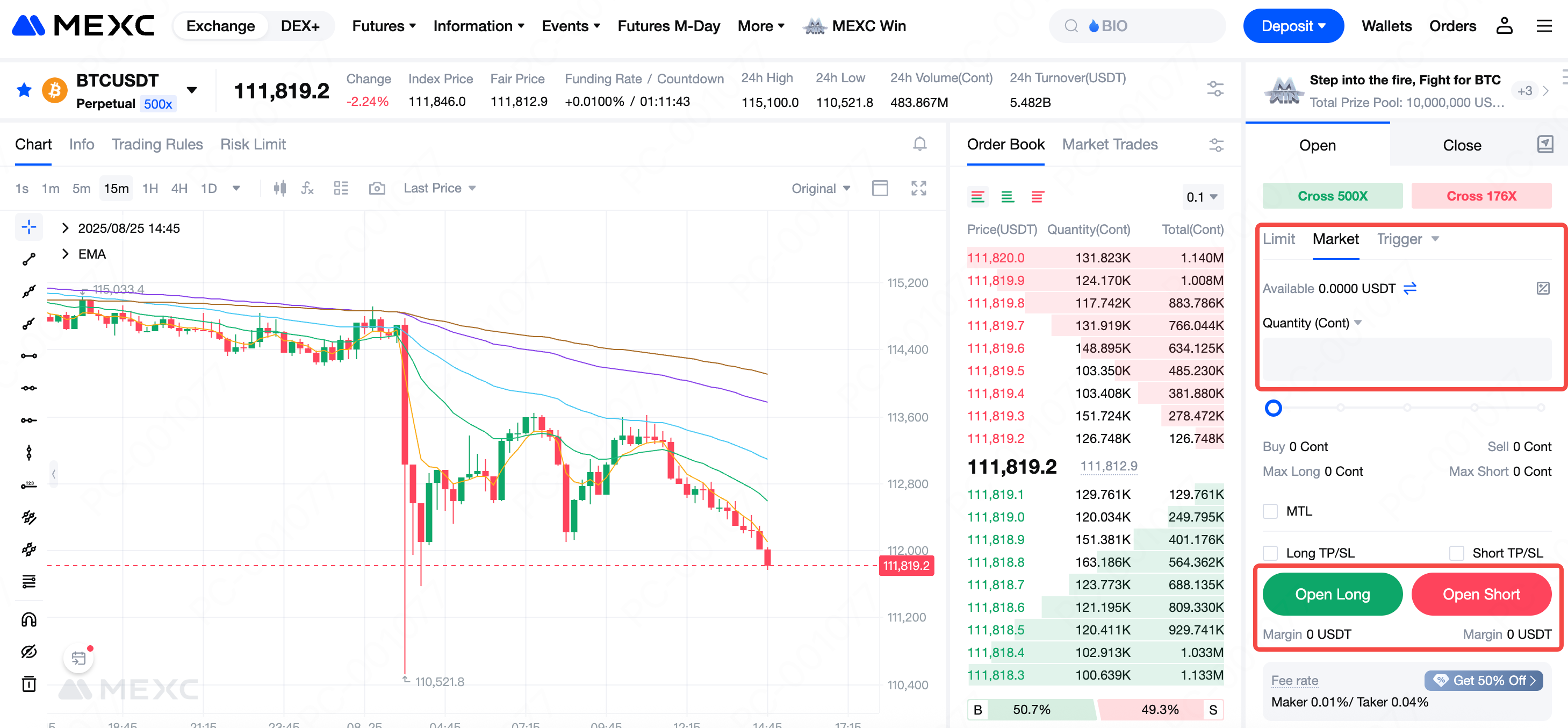
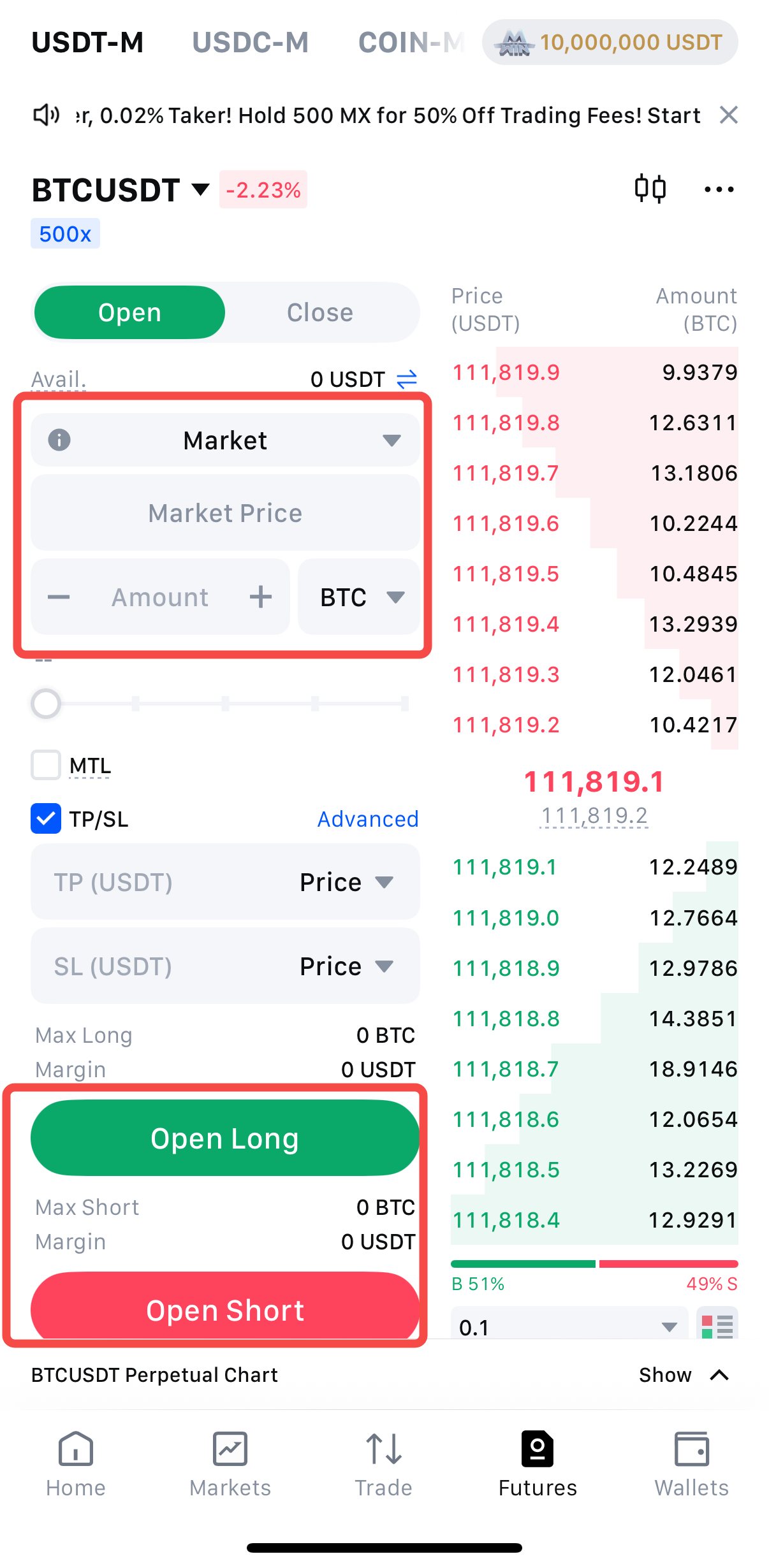
3. Trigger Order
3.1 Definition
3.2 Advantages and Disadvantages
- Advantages: Trigger orders reduce the need for constant monitoring, allowing users to plan entry and exit points in advance. They help secure profits or limit losses during trading.
- Disadvantages: A Trigger order may not always be successfully triggered due to position limits, insufficient margin, or market conditions.
3.3 Use Cases
3.4 Three Price Types
- Last Price: The most recent transaction price in the MEXC Futures order book.
- Fair Price: A protective mechanism introduced to prevent losses caused by abnormal price fluctuations on a single platform. It is calculated using weighted price data from major exchanges and reflects the market price more fairly.
- Index Price: Calculated by MEXC based on spot prices from multiple leading exchanges, with different weightings applied.
3.5 How to Place a Trigger Order
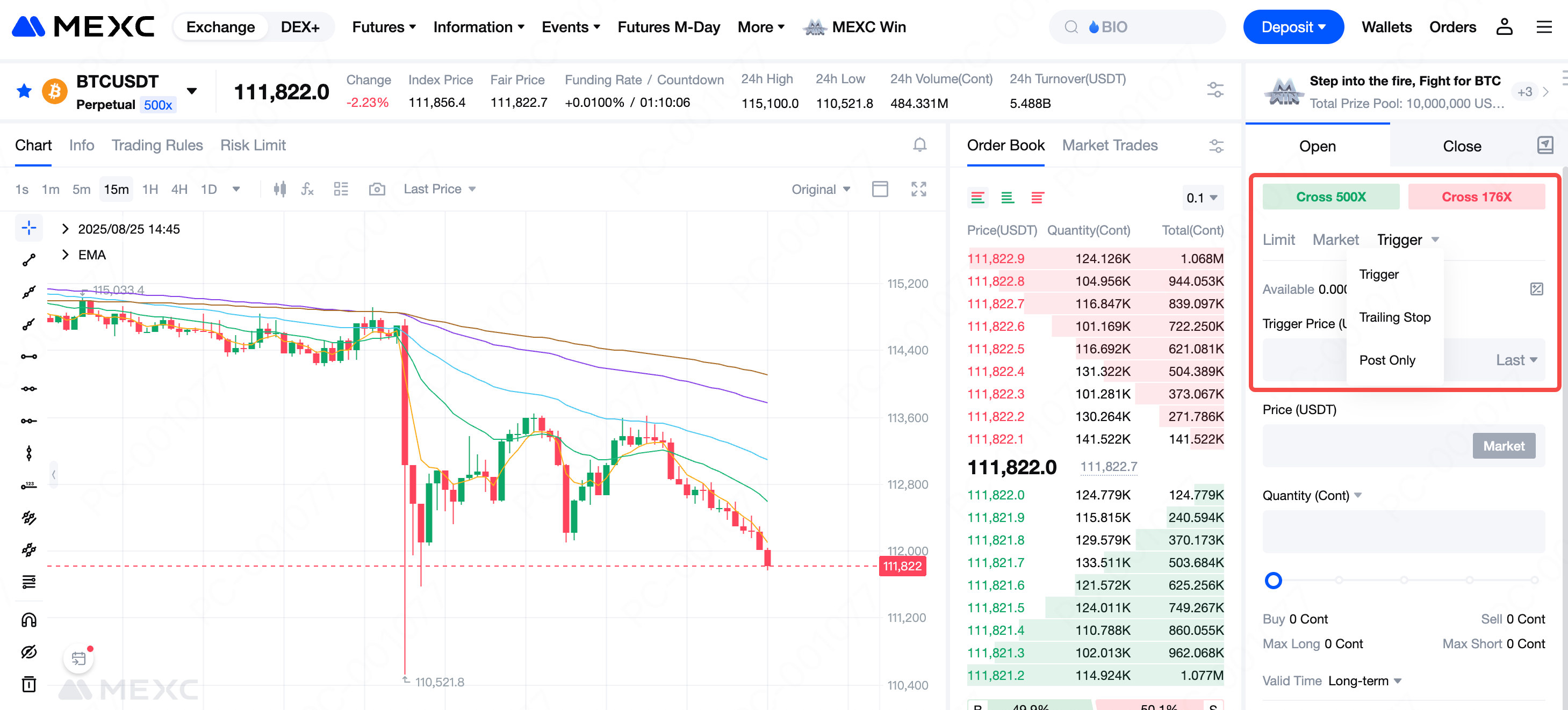
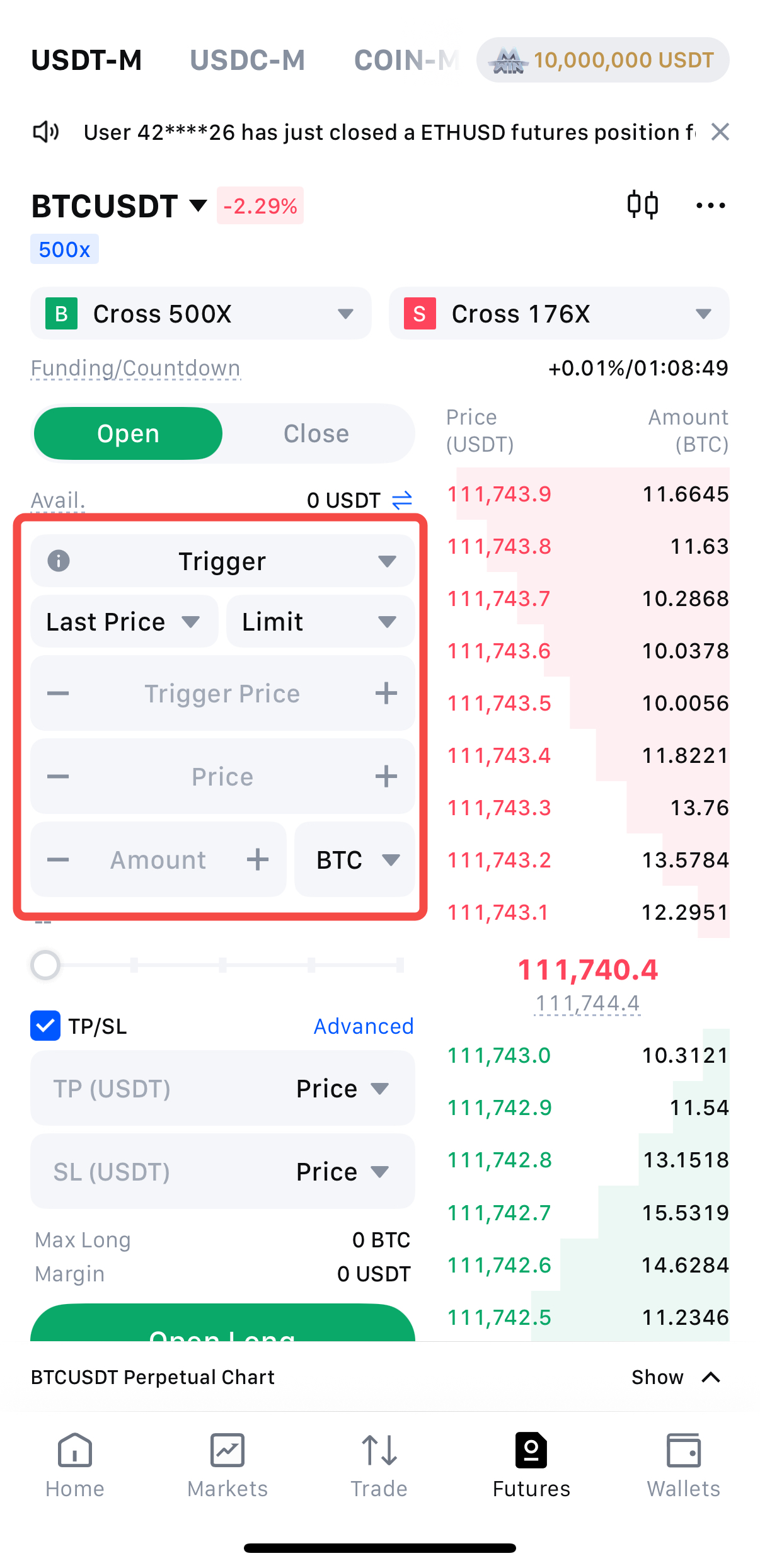
4. Trailing Stop Order
4.1 Definition
- Trigger Price = Highest Price Reached – Trail Variance (Price Distance)
- Trigger Price = Highest Price Reached × (1 – Trail Variance % (Ratio)
- Trigger Price = Lowest Price Reached + Trail Variance (Price Distance)
- Trigger Price = Lowest Price Reached × (1 + Trail Variance % (Ratio)
4.2 Advantages and Disadvantages
- Advantages: Provides better control over profits and allows traders to replicate trading strategies more systematically.
- Disadvantages: The cryptocurrency market is highly volatile, making it challenging to set an appropriate callback (trail) ratio.
4.3 Use Cases
4.4 How to Place a Trailing Stop Order
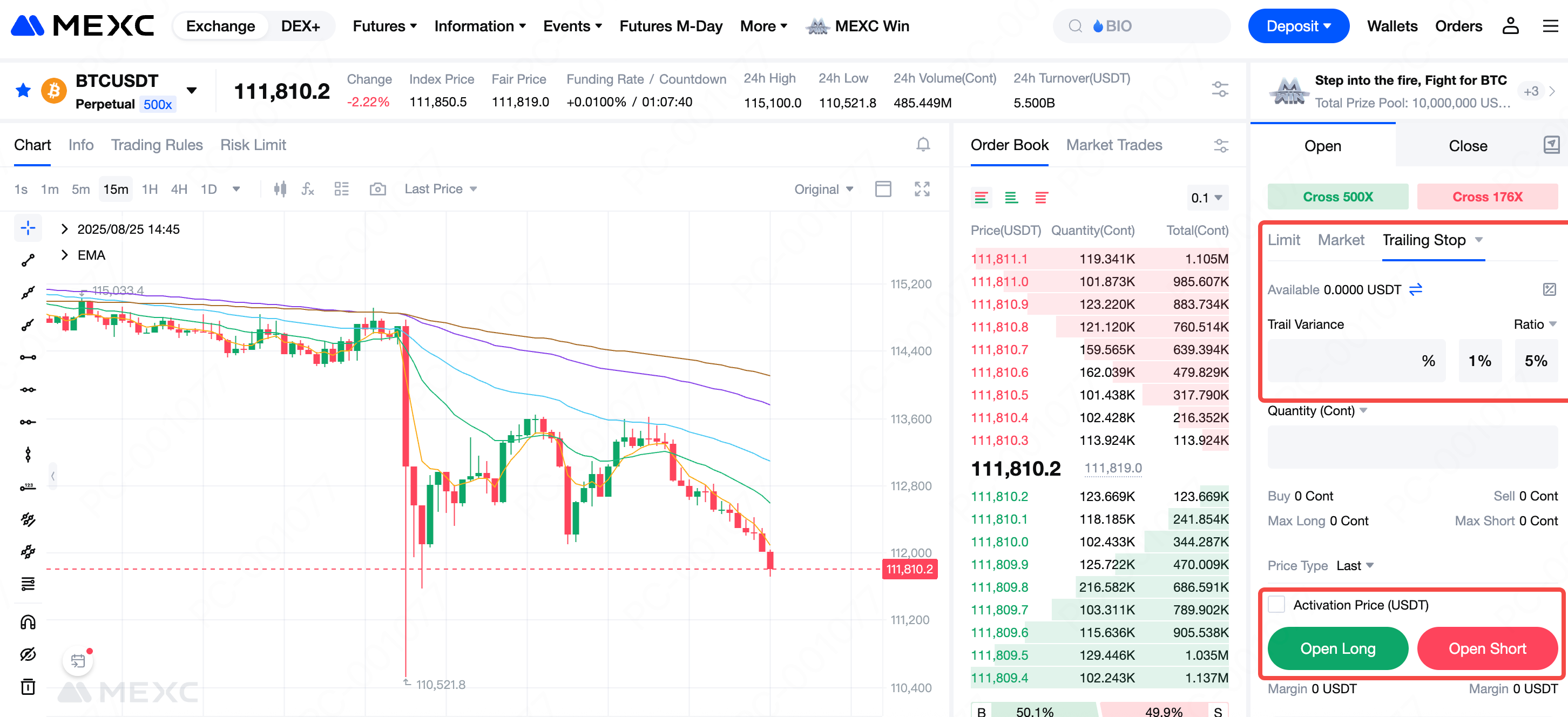
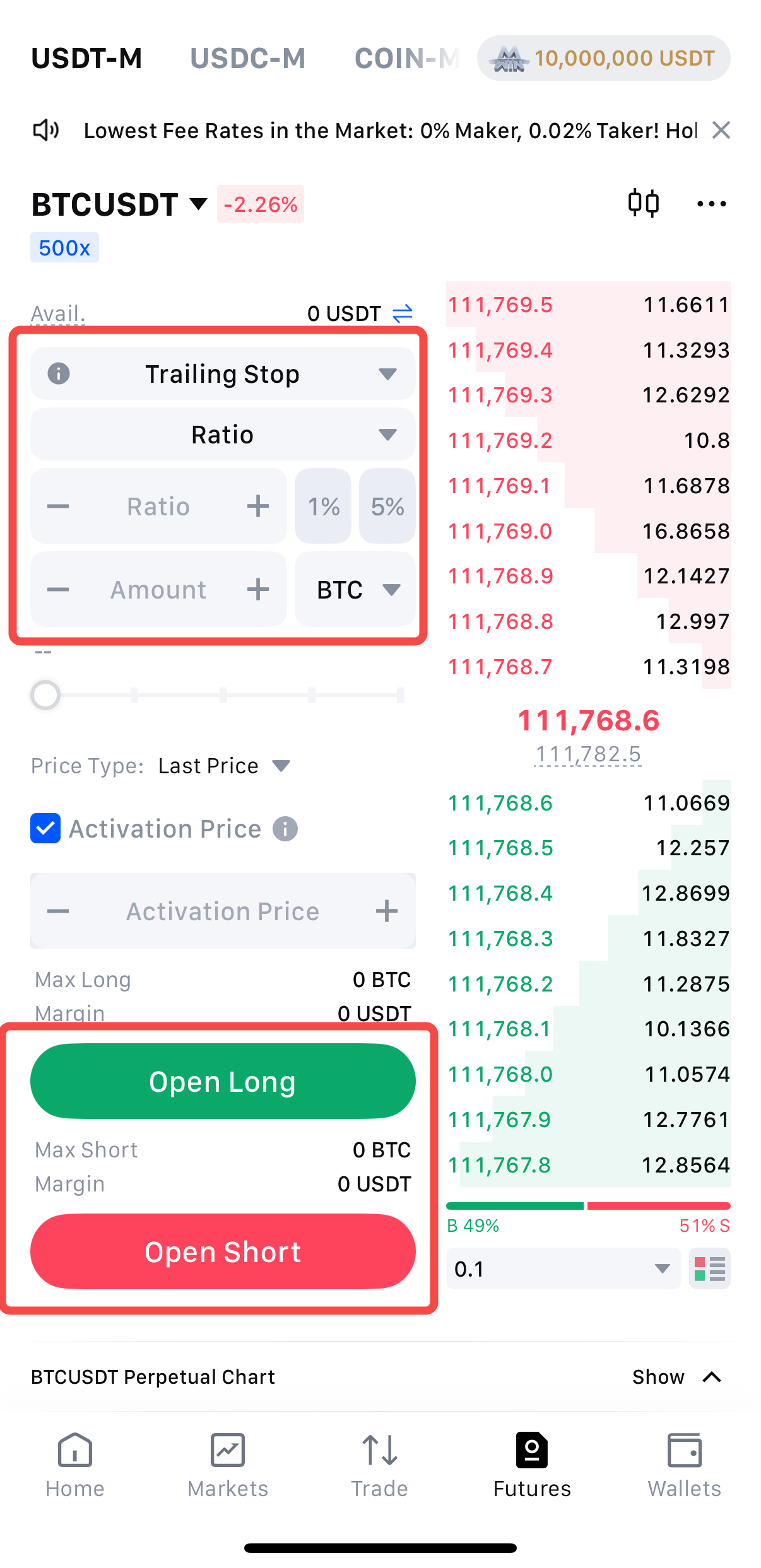
5. Post Only
5.1 Definition
5.2 Advantages and Disadvantages
- Advantages: In MEXC Futures trading, Maker orders have a much lower fee rate compared to Taker orders. Using Post Only guarantees that you always pay 0% fees.
- Disadvantages: Since Post Only places pending orders rather than taking existing ones, there is no guarantee of immediate execution.
5.3 Use Cases
5.4 How to Place a Post Only Order
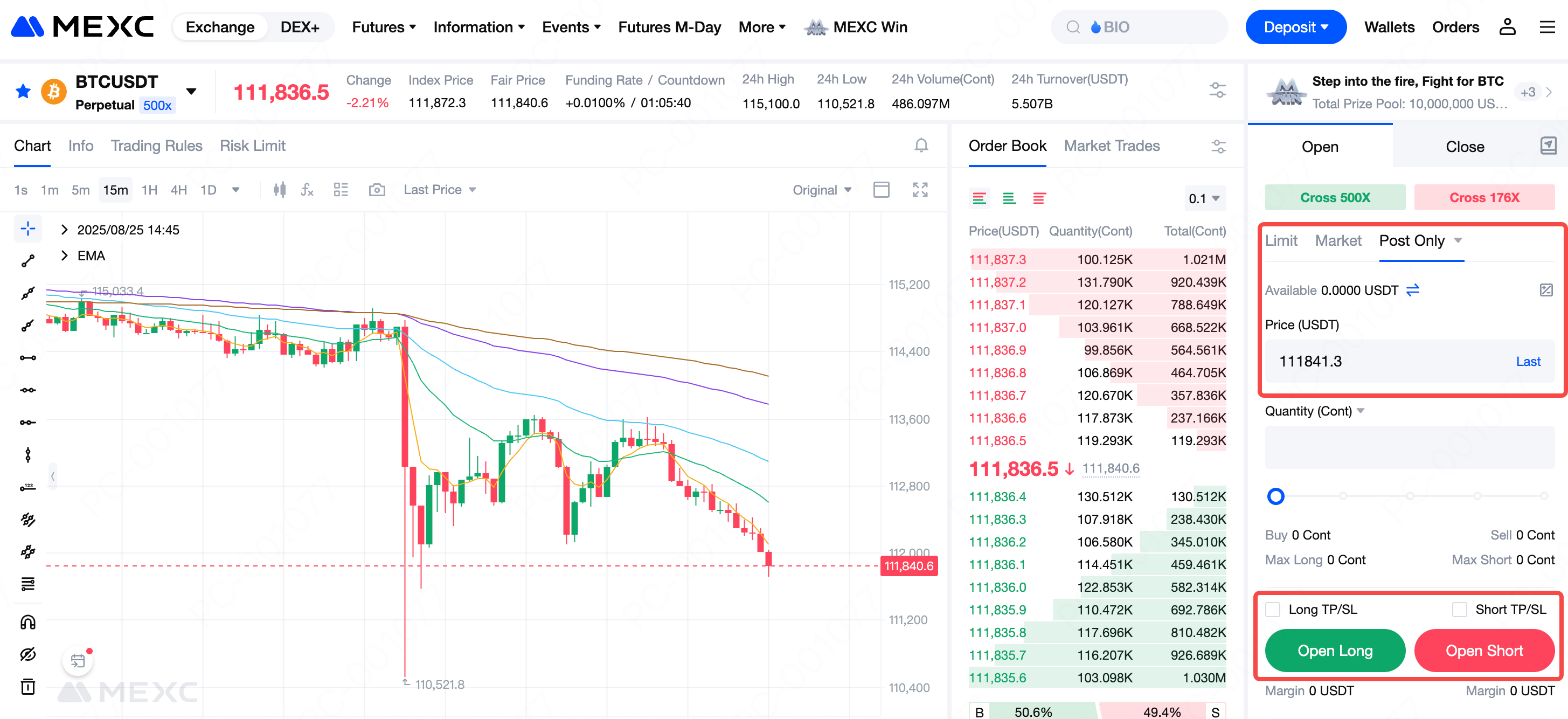
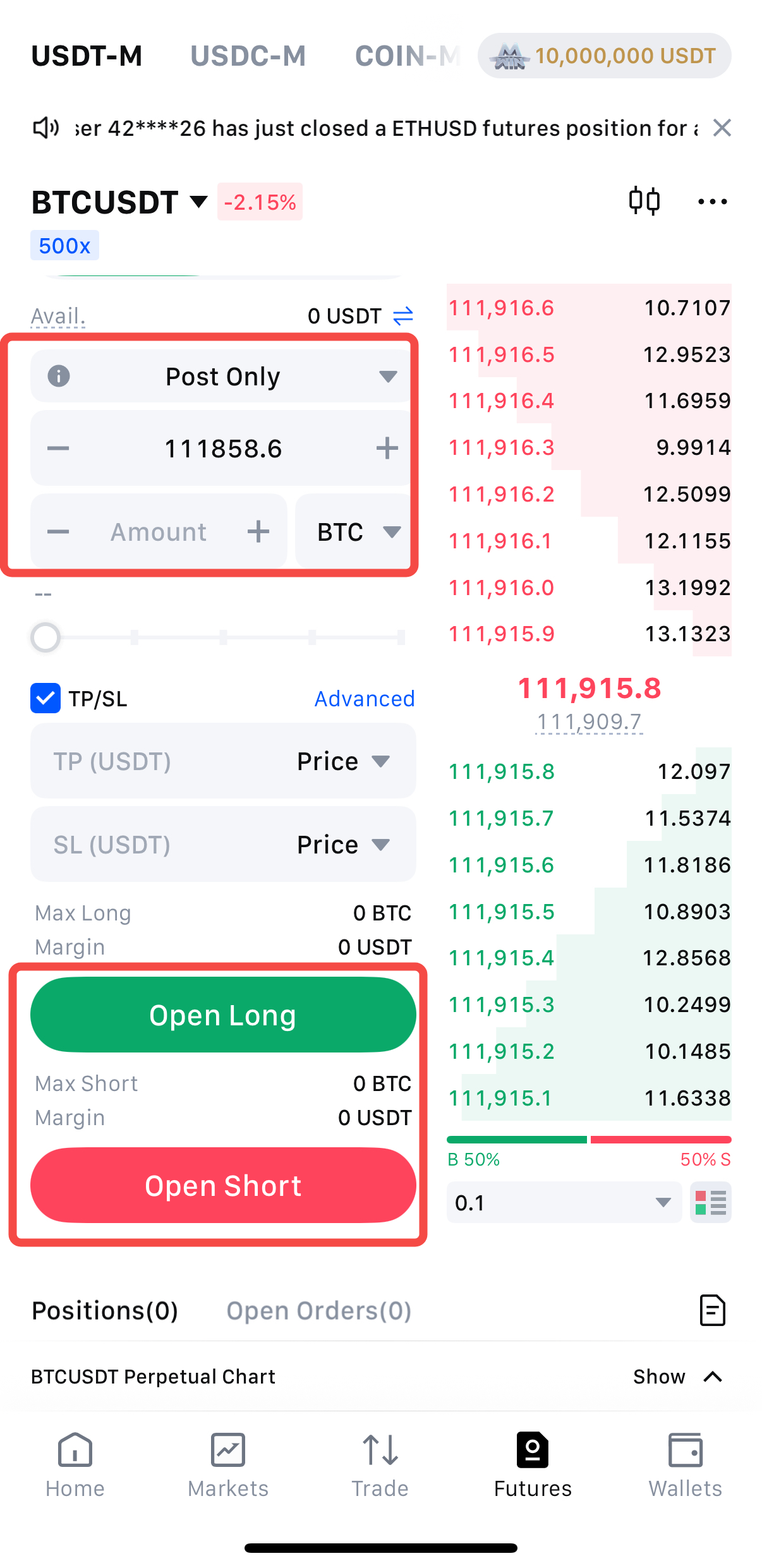
6.1 Definition
6.2 Advantages and Disadvantages
- Faster Execution: A Chase Limit Order allows execution at the real-time market price within a set protection limit, maximizing the chances of a quick fill.
- Capture Market Opportunities: Enables traders to react swiftly to market volatility and seize favourable price movements.
- Price Uncertainty: The executed price may differ from expectations. Buy orders could fill at higher prices or sell orders at lower prices than intended.
- Slippage Risk: During sharp price movements, the actual execution price may deviate significantly from the initial expected price, resulting in slippage.
6.3 Use Cases
6.4 How to Place a Chase Limit Order
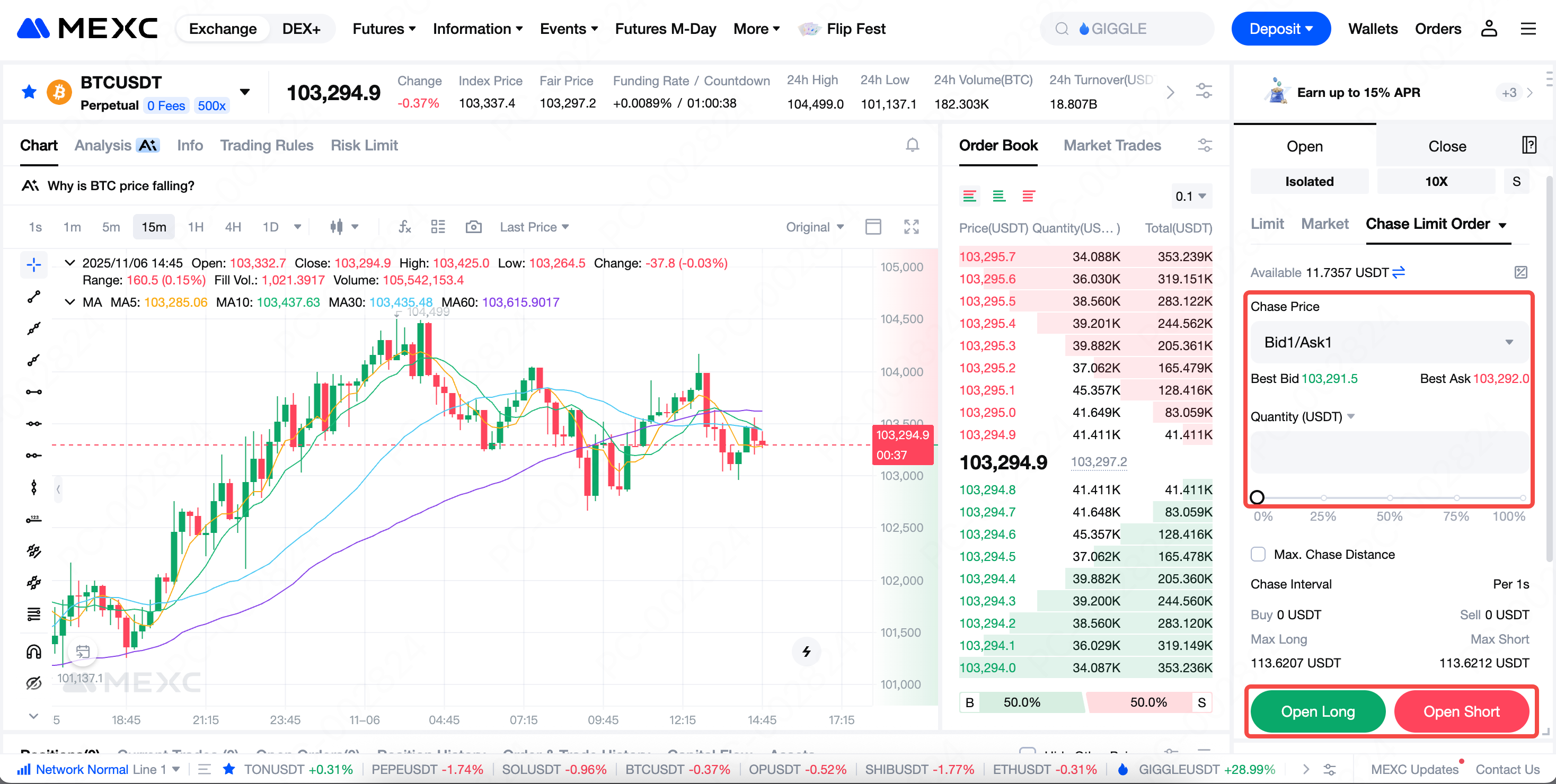
Recommended Reading:
- Why Choose MEXC Futures? Gain deeper insight into the advantages and unique features of MEXC Futures to help you stay ahead in the market.
- MEXC Futures Trading Tutorial (App) Understand the full process of trading Futures on the app and get started with ease.
Popular Articles
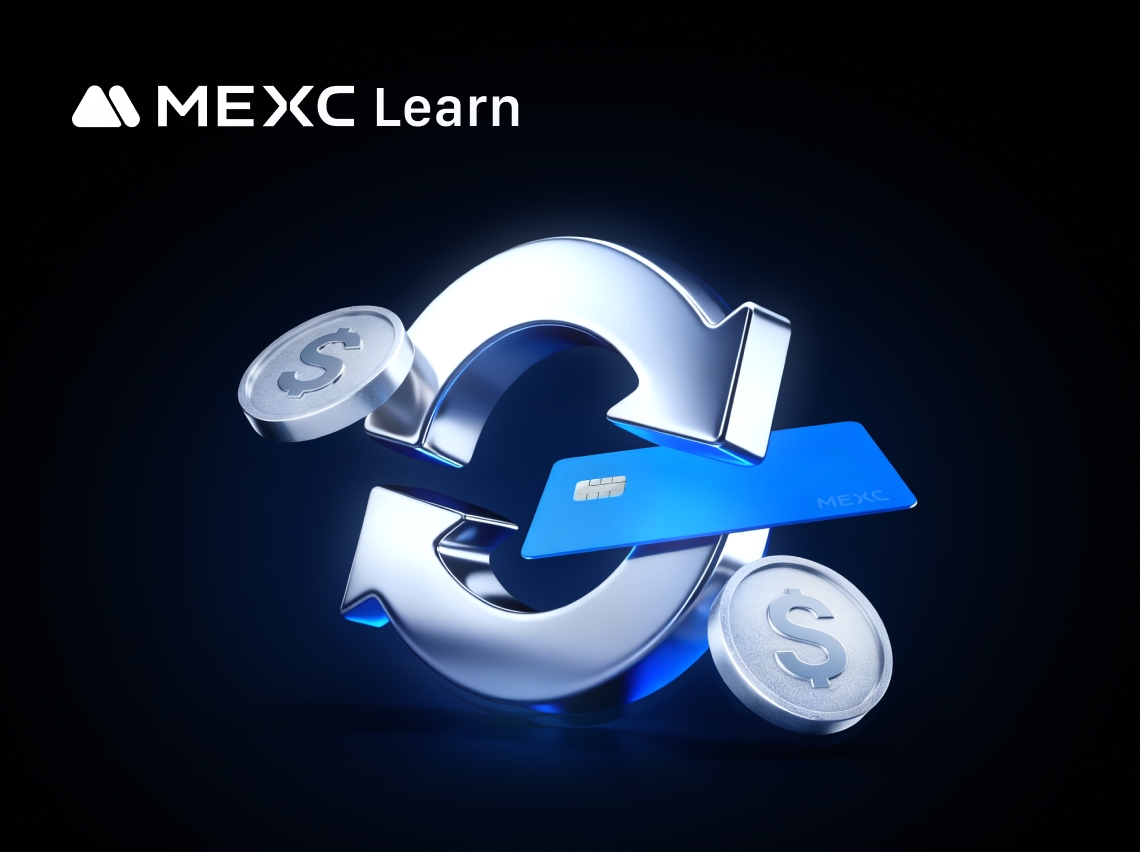
What is P2P Trading: The Safest and 0 Fee Way to Buy and Sell Crypto Globally
In many emerging markets, users check “weather tomorrow” not only for climate conditions but increasingly as an indicator of upcoming “market weather” — inflation spikes, currency drops, or policy cha

What is GAIB? Complete Guide to the AI Infrastructure Economic Layer and GAIB Token
The artificial intelligence revolution demands unprecedented computing power, yet investing in AI infrastructure remains out of reach for most. GAIB transforms this landscape as the world's first econ
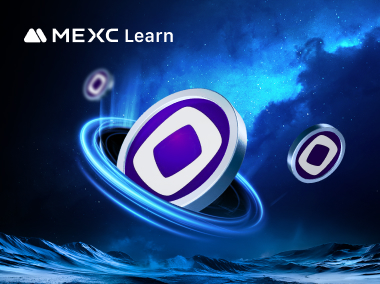
Emerging Layer-1 Generates Anticipation: Can Monad Disrupt the Market?
Monad is a high-performance Layer-1 blockchain project designed to overcome the transaction throughput and scalability limitations of traditional blockchains like Ethereum, while maintaining full comp

What is Monad (MON)? Complete Guide to the High-Performance Ethereum-Compatible Blockchain
Monad represents a breakthrough in blockchain technology, delivering 10,000 transactions per second while maintaining full Ethereum compatibility and true decentralization. This comprehensive guide ex
Hot Crypto Updates
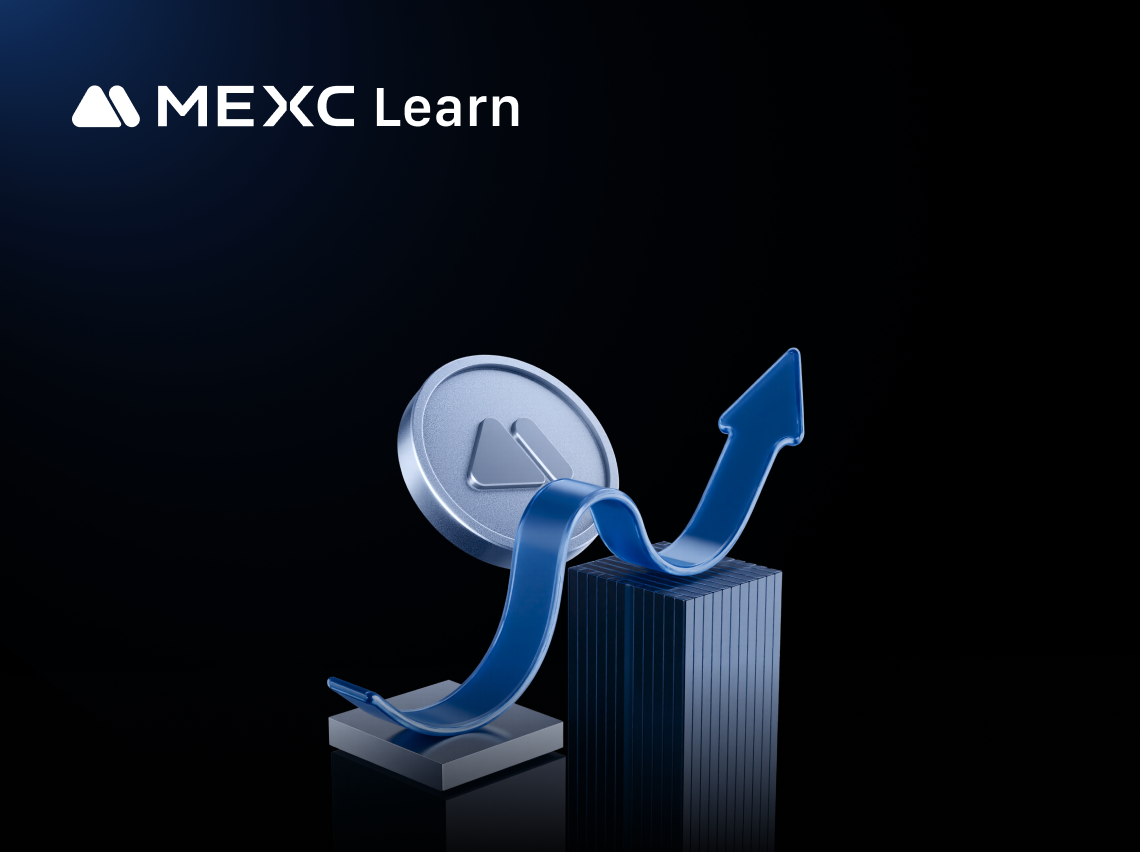
Bitcoin (BTC) Price Today & Price Prediction 2026-2030: Will BTC Continue Rising?
Key Takeaways Bitcoin (BTC) is currently trading around $95,600 USDBTC price prediction 2026: $150,000 - $230,000 USDBTC price prediction 2030: Potentially reaching $480,000 - $560,000 USDTrade Bitcoi
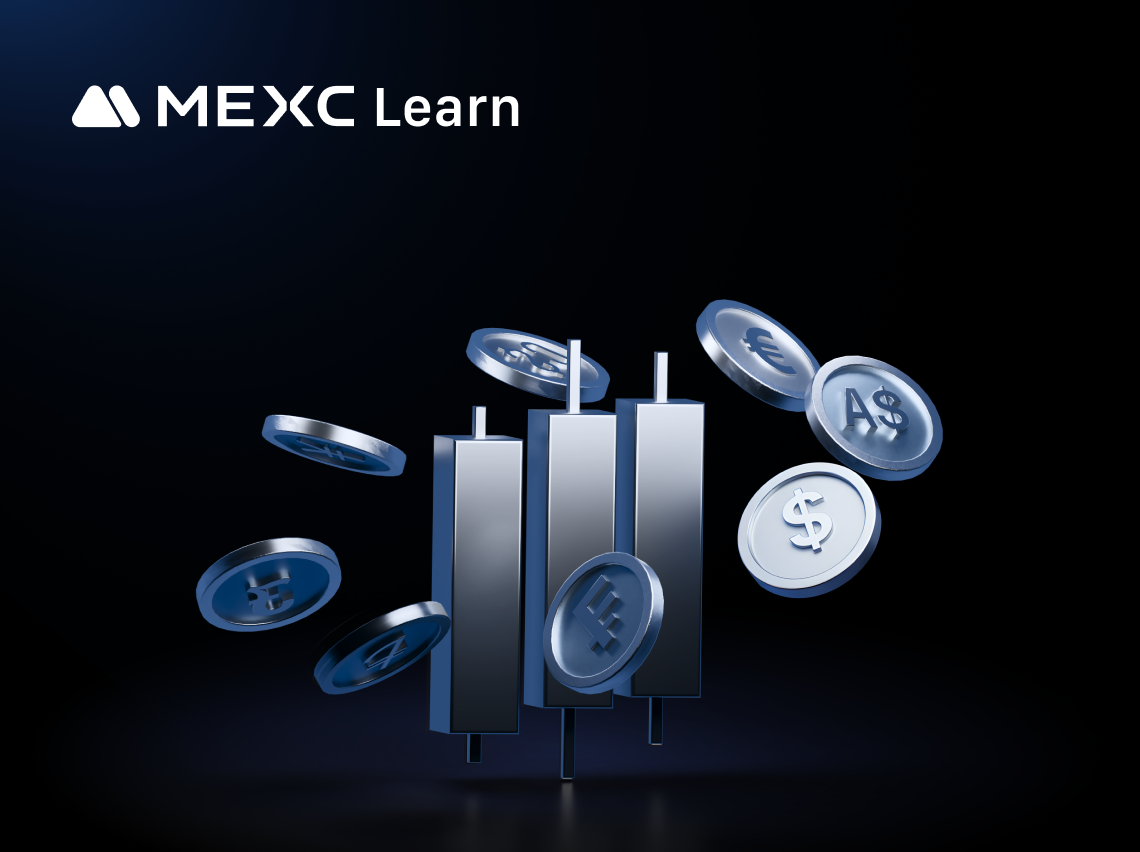
FimarkCoin (FMC) Price Today: Vietnam VND Market & 2026-2030 Predictions
Key Takeaways FimarkCoin (FMC) is currently trading at approximately ₫28.40 VND (November 2025)FMC serves as the native token of FMCPAY Exchange, launched in 2021 for streamlined payment solutions2026
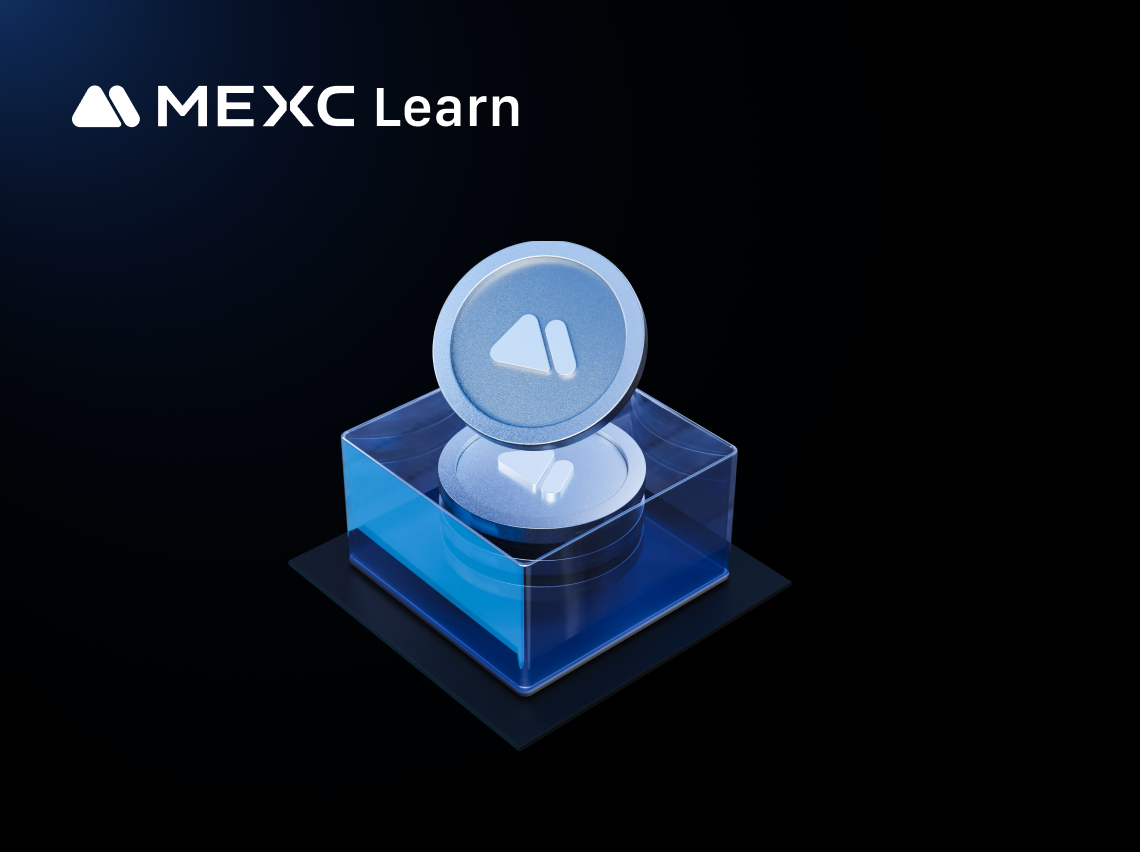
HeliChain (HELI) Price Prediction for Vietnam: VND Price Forecast 2026-2030
Key Takeaways HeliChain (HELI) is a Layer 1 blockchain revolutionizing mobile mining accessibilityCurrent HELI price: ~₫27-68 VND (as of November 2025)Price predictions suggest HELI could reach $0.001
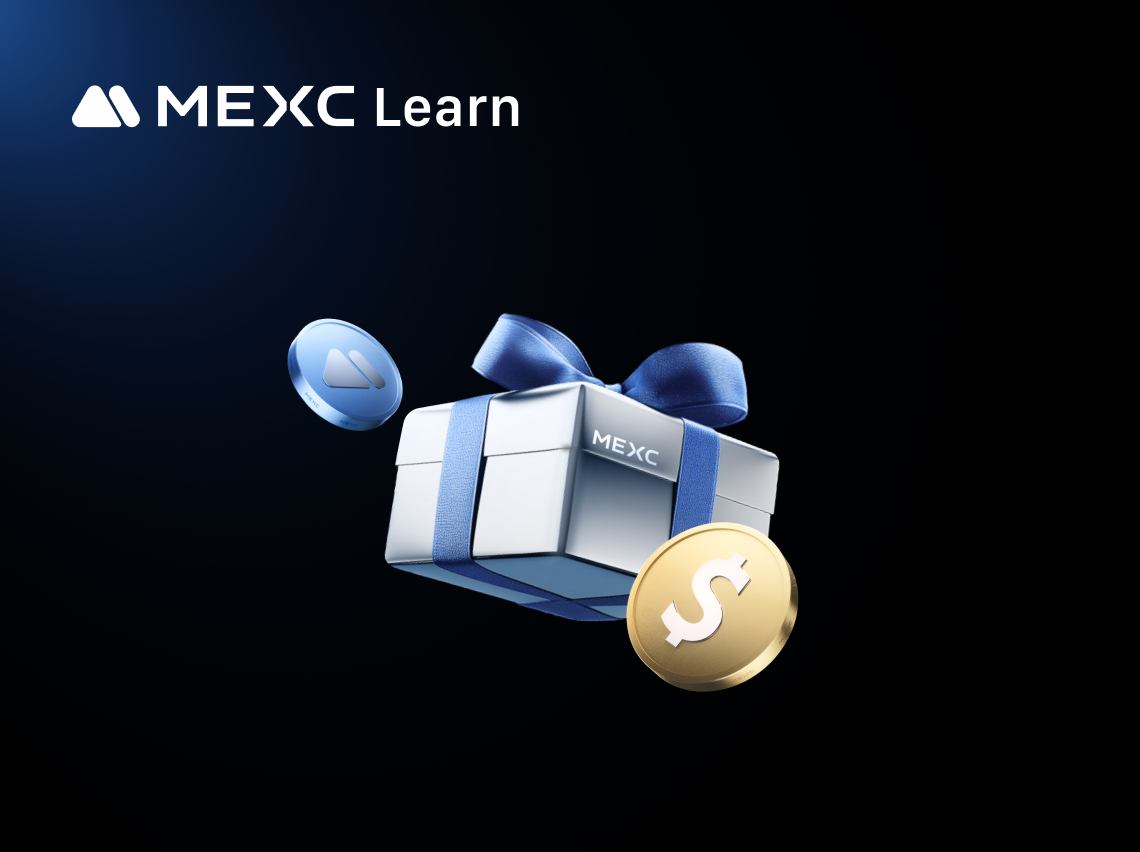
Is Monero a Good Investment? What You Need to Know
Privacy has become a hot topic in the cryptocurrency world. While Bitcoin and Ethereum operate on transparent blockchains where anyone can track transactions, Monero takes a different approach.This pr
Trending News

Botanix launches stBTC to deliver Bitcoin-native yield
The post Botanix launches stBTC to deliver Bitcoin-native yield appeared on BitcoinEthereumNews.com. Botanix Labs has launched stBTC, a liquid staking token designed to turn Bitcoin into a yield-beari
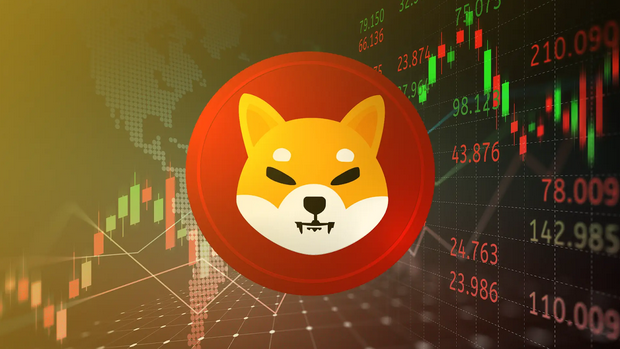
Shiba Inu Faces Growing Risks as Leadership Instability Concerns Holders
TLDR Shiba Inu faces growing risks due to leadership instability and the absence of its lead developer, Shytoshi Kusama. The lack of identifiable leadership raises trust issues, hindering Shiba Inu’s

The FDA Is Trying To Make Corporate Free Speech Situational
The post The FDA Is Trying To Make Corporate Free Speech Situational appeared on BitcoinEthereumNews.com. BENSENVILLE, ILLINOIS – SEPTEMBER 10: Flanked by U.S. Attorney General Pam Bondi (rear), and F

More Americans Filed For Unemployment Last Month Than Expected
The post More Americans Filed For Unemployment Last Month Than Expected appeared on BitcoinEthereumNews.com. Topline The number of Americans who filed for unemployment rose more than expected from mid
Related Articles
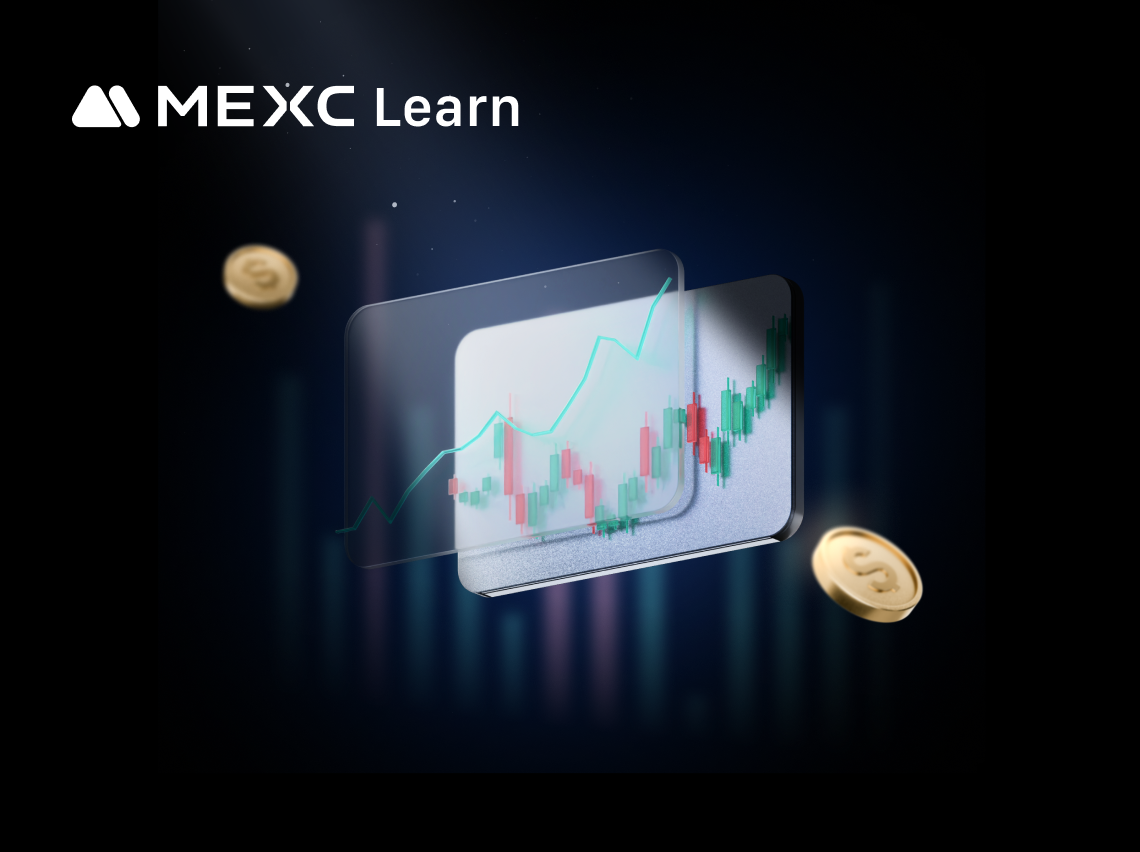
How to Trade Stock Futures on MEXC
Crypto-Based Stock Futures are financial derivatives that integrate U.S. equities (stocks of publicly listed U.S. companies) with the cryptocurrency market through Futures-based trading. These instrum
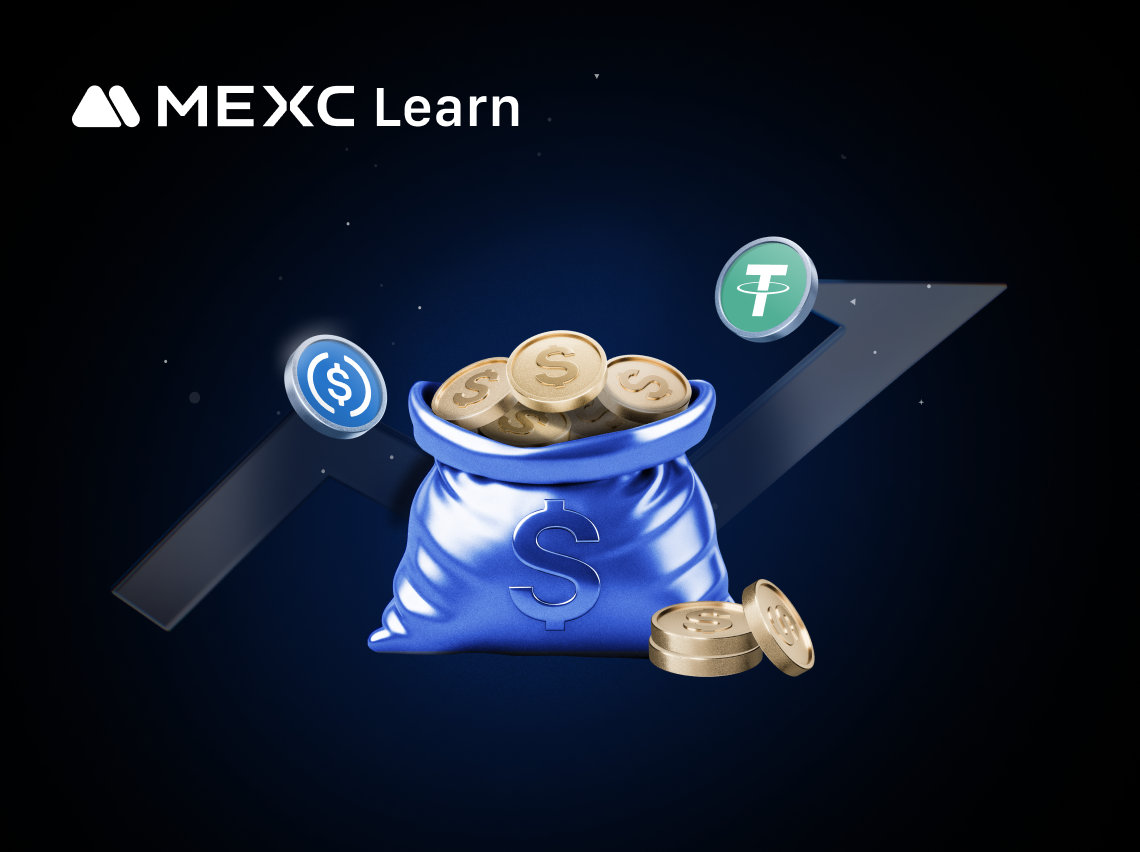
What is MEXC Futures Earn?
1. What is MEXC Futures Earn?Futures Earn is a financial product offered by MEXC for Futures users. Once activated, eligible funds in your Futures account will automatically enroll in this exclusive E
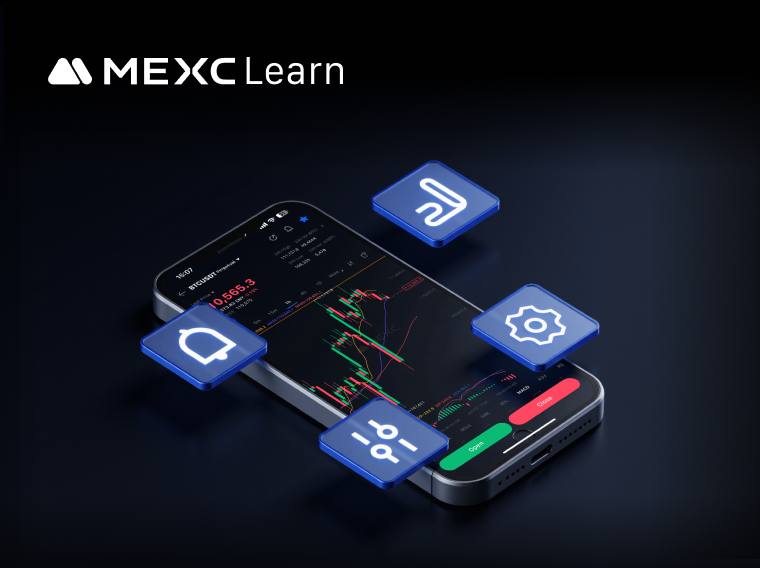
Master Key Features on the MEXC Futures Trading Page for a Smoother Experience
In the cryptocurrency market, Futures trading has become an important tool for many investors to improve capital efficiency and capture market opportunities, thanks to its features such as high levera

FAQ on Liquidation for Futures Trading
1. What Is Liquidation?Liquidation, also referred to as forced closure or margin call, occurs when the platform automatically closes a user's position. On MEXC, the maintenance margin rate (MMR) is th
